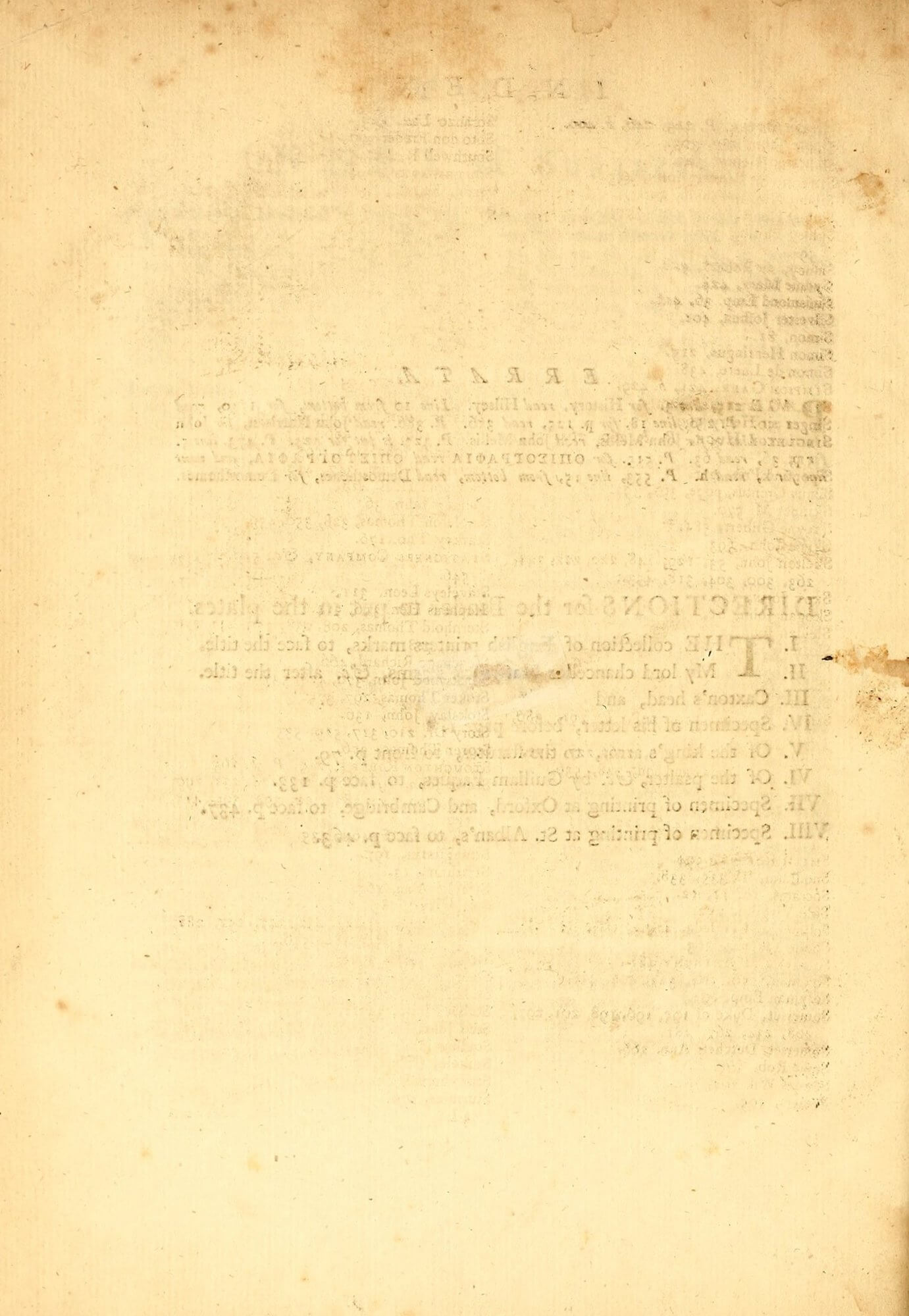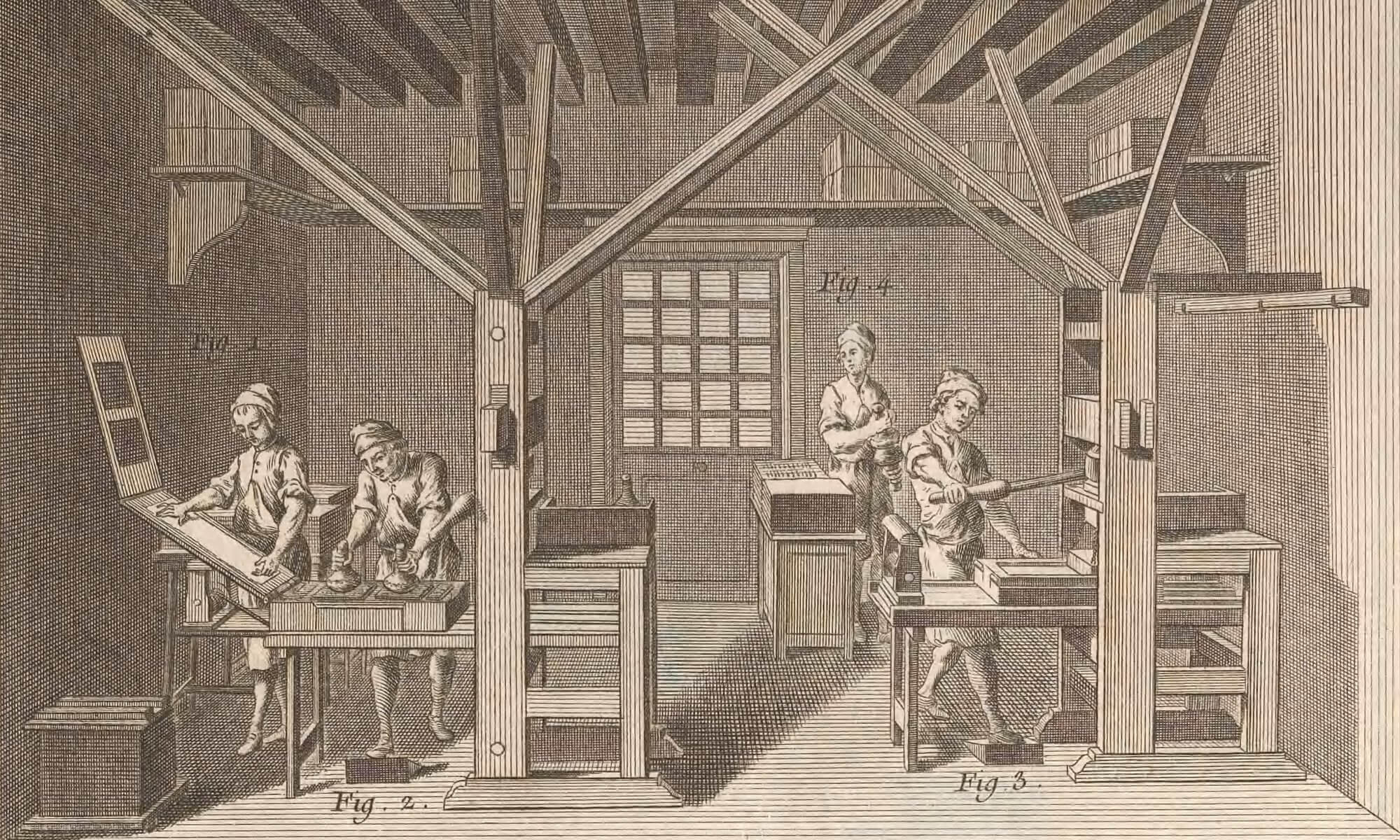Ames, Typographical antiquities, 1749 (4I4v)
This blank verso unsurprisingly shows bleed-through from the recto’s errata list and binder instructions. But it also shows off-set ink from the index: notice the columns of text and the heading. If you look closely above the bleed-through of “Directions” you can see a series of numbers starting “263, 300, 304”; next to the bleed-through you can see a series of “S”s lined up vertically, suggesting that this is part of the “S” entries. If you turn to sig. 4I1r, you’ll see an entry for John Skelton that matches these characteristics. In a quarto, pages 1r and 4v are both on the outer forme, and so when those sheets were hung to dry, the ink from one page could easily transfer to another, as we see here.

open image or download from source: BPL
Joseph Ames, Typographical antiquities: being an historical account of printing in England. London: Printed by W. Faden for J. Robinson, 1749. (sig. 4I4v)
Boston Public Library, Z151 .A51 1749x (public domain)

